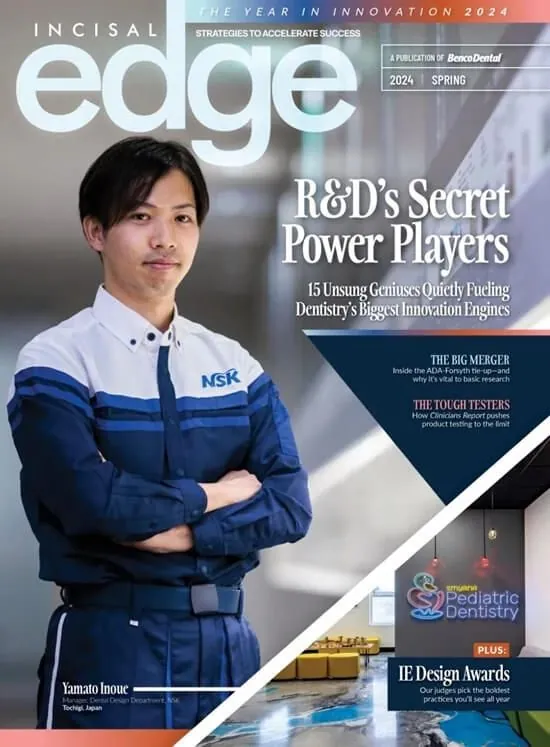One early surveyor, complete with two-headed handpiece, was a pain in more ways than one.
THE COMPLICATED TOOL you see here was invented sometime around 1912 and patented in 1915 by a Russian-born dentist named Herman E.S. Chayes, who practiced in New York City. His Chayes Parallelometer & Parallelodrill system was an early precursor of the modern surveyor. What made it unique was a handpiece that could prepare two surfaces simultaneously.
The idea was that with this tool, a dentist could create a one-piece, multi-unit bridge that could be seated into place because all the tooth preparations were parallel. Every antique dental collection boasts one of these handy-dandy gadgets—and we would guess that in the early twentieth century they could be found in most progressive dental offices.
However, just because dentists owned them didn’t necessarily mean they got used. Preparing the remaining teeth to support the fixed bridge was time-consuming and painful. Besides, even with the use of this complex device, there was a good chance the finished product still wouldn’t seat properly. It was much easier to extract the remaining teeth and make a full denture, or construct a removable partial held in place by clasps.
According to his obituary in the January 1934 edition of The Dental Cosmos, Dr. Chayes “was indeed an artist, and of a highly temperamental nature” with “extreme idealistic notions” who nonetheless “had an intensely critical mind.” Maybe he was simply ahead of his time. Whatever the case, long-span, multi-unit bridgework is less often prescribed these days. Shorter spans that are easier to seat successfully are more often the norm. Still, the Chayes system offers an important reminder of how we got here.



